A vitamin is an organic compound required as a vital nutrient in tiny amounts by an organism. In other words, an organic chemical compound (or related set of compounds) is called a vitamin when it cannot be synthesized in sufficient quantities by an organism, and must be obtained from the diet.Deficiencies of vitamins are classified as either primary or secondary. A primary deficiency occurs when an organism does not get enough of the vitamin in its food. A secondary deficiency may be due to an underlying disorder that prevents or limits the absorption or use of the vitamin, due to a “lifestyle factor”, such as smoking, excessive alcohol consumption, or the use of medications that interfere with the absorption or use of the vitamin.
People who eat a varied diet are unlikely to develop a severe primary vitamin deficiency. In contrast, restrictive diets have the potential to cause prolonged vitamin deficits, which may result in often painful and potentially deadly diseases.
Well-known human vitamin deficiencies involve thiamine (beriberi), niacin (pellagra), vitamin C (scurvy), and vitamin D (rickets). In much of the developed world, such deficiencies are rare; this is due to (1) an adequate supply of food and (2) the addition of vitamins and minerals to common foods, often called fortification.
In addition to these classical vitamin deficiency diseases, some evidence has also suggested links between vitamin deficiency and a number of different disorders.
Beriberi:
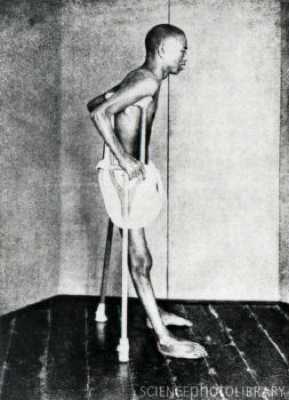
Beriberi is a nervous system ailment caused by a thiamine (vitamin B1) deficiency in the diet. Thiamine is involved in the breakdown of molecules such as glucose and is also found on the membranes of neurons.
Symptoms of beriberi include severe lethargy and fatigue, weight loss, emotional disturbances, impaired sensory perception (Wernicke’s encephalopathy), weakness and pain in the limbs, and periods of irregular heart rate. , together with complications affecting the cardiovascular, nervous, muscular, and gastrointestinal systems.
Edema (swelling of bodily tissues) is common. It may increase the amount of lactic acid and Pyruvic acid within the blood. In advanced cases, the disease may cause heart failure and death. Beriberi is rare in developed countries because most foods are now vitamin-enriched.
Excluding the presence of arsenic in the environment (e.g. well water) one can get enough thiamine by eating a normal, healthy diet. Today, beriberi occurs mostly in patients who abuse alcohol. Drinking heavily can lead to poor nutrition, and excess alcohol makes it harder for the body to absorb and store thiamine.
Treatment for beriberi is with thiamine hydrochloride, either in tablet form or injection. A rapid and dramatic recovery within hours can be made when this is administered to patients, and their health can be improved within an hour of starting treatment. In emergency situations where concentrated thiamine supplements are unavailable, feeding the patient with a thiamine-rich diet (e.g. whole grain brown bread) will lead to recovery, though at a much slower rate.
Pellagra:

Pellagra is a vitamin deficiency disease most commonly caused by a chronic lack of niacin (vitamin B3) in the diet. It can be caused by decreased intake of niacin or tryptophan, and possibly by excessive intake of leucine.
It may also result from alterations in protein metabolism in disorders such as carcinoid syndrome. A deficiency of the amino acid lysine can lead to a deficiency of niacin, as well.Pellagra is classically described by “the four D’s”: diarrhea, dermatitis, dementia and death.
It symptoms are High sensitivity to sunlight, Aggression, Dermatitis, alopecia, edema, Smooth, beefy red glossitis, Red skin lesions, Insomnia, Weakness, Mental confusion, Ataxia, paralysis of extremities, peripheral neuritis, Diarrhea, Dilated cardiomyopathy.
Eventually dementia, Psychosensory disturbances (impressions as being painful, annoying bright lights, odours intolerance causing nausea and vomiting, dizziness after sudden movements),Psychomotor disturbances (restlessness, tense and a desire to quarrel, increased preparedness for motor action),Emotional disturbances.
Untreated, the disease can kill within four or five years. Treatment is with nicotinamide, a chemical related to niacin. The frequency and amount of nicotinamide administered depends on the degree to which the condition has progressed.
Biotin deficiency:
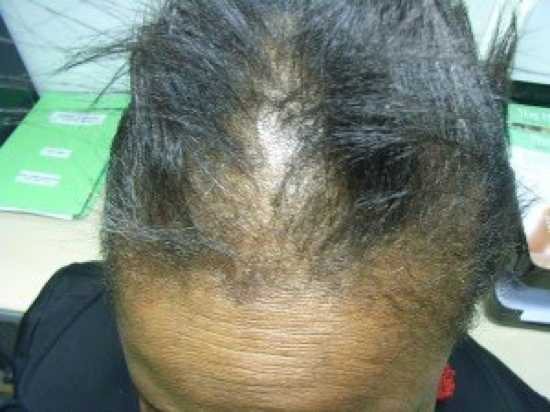
Biotin deficiency is a rare nutritional disorder which can become serious, even fatal, if allowed to progress untreated. It can occur in people of any age, ancestry, or gender. Biotin is part of the B vitamin family.
Biotin deficiency rarely occurs among healthy people because the daily requirement of biotin is low, many foods provide adequate amounts of it, intestinal bacteria synthesize small amounts of it, and the body effectively scavenges and recycles it from bodily waste.
However, deficiencies can be caused by consuming raw egg whites over a period of months to years. Egg whites contain high levels of avidin, a protein that binds biotin strongly.
When cooked, avidin is partially denatured and becomes somewhat non-toxic. It symptoms are Rashes including red, patchy ones near the mouth (erythematous periorofacial macular rash), Fine and brittle hair, Hair loss or total baldness (alopecia), Anemia, Birth Defects(Still being studied), Seborrheic dermatitis, Fungal infections, Hallucinations, Lethargy, Anorexia, Mild depression, which may progress to profound lassitude and, eventually, to somnolence, Generalized muscular pains (myalgias), paresthesias.
As treatment biotin supplements can be taken in pill form. The diet can also be altered to include more cows’ milk and liver, which are good sources of biotin. If overconsumption of raw egg whites is responsible, a change in diet may be appropriate.
Scurvy:
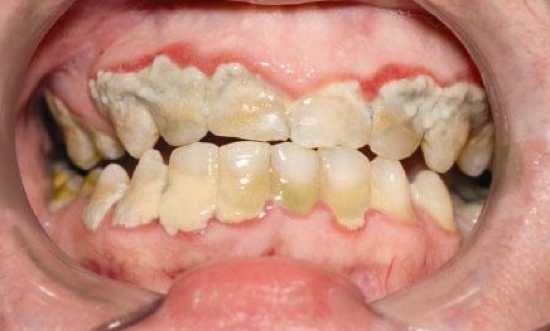
Scurvy is a disease resulting from a deficiency of vitamin C, which is required for the synthesis of collagen in humans. The chemical name for vitamin C, ascorbic acid, is derived from the Latin name of scurvy, scorbutus, which also provides the adjective scorbutic (“of, characterized by or having to do with scurvy”).
Scurvy often presents itself initially as symptoms of malaise and lethargy, followed by formation of spots on the skin, spongy gums, and bleeding from the mucous membranes.
Spots are most abundant on the thighs and legs, and a person with the ailment looks pale, feels depressed, and is partially immobilized. As scurvy advances, there can be open, suppurating wounds, loss of teeth, jaundice, fever, neuropathy and death. Early symptoms are malaise and lethargy.
After 1–3 months, patients develop shortness of breath and bone pain. Myalgias may occur because of reduced carnitine production. Other symptoms include skin changes with roughness, easy bruising and petechiae, gum disease, loosening of teeth, poor wound healing, and emotional changes.
Dry mouth and dry eyes similar to Sjogren’s syndrome may occur. In the late stages, jaundice, generalized edema, oliguria, neuropathy, fever, and convulsions, and eventual death are frequently seen. Scurvy can be prevented by a diet that includes certain citrus fruits such as oranges or lemons.
Other sources rich in vitamin C are fruits such as blackcurrants, guava, kiwifruit, papaya, tomatoes, bell peppers, and strawberries. It can also be found in some vegetables, such as carrots, broccoli, potatoes, cabbage, spinach and paprika.
Some fruits and vegetables not high in vitamin C may be pickled in lemon juice, which is high in vitamin C. Though redundant in the presence of a balanced diet, various nutritional supplements are available that provide ascorbic acid well in excess of that required to prevent scurvy, and even some candies and most soft drinks contain vitamin C as a preservative.
Rickets:

Rickets is a softening of bones in children due to deficiency or impaired metabolism of vitamin D, magnesium, phosphorus or calcium, potentially leading to fractures and deformity. Rickets is among the most frequent childhood diseases in many developing countries.
The predominant cause is a vitamin D deficiency, but lack of adequate calcium in the diet may also lead to rickets (cases of severe diarrhea and vomiting may be the cause of the deficiency). Although it can occur in adults, the majority of cases occur in children suffering from severe malnutrition, usually resulting from famine or starvation during the early stages of childhood.
Osteomalacia is the term used to describe a similar condition occurring in adults, generally due to a deficiency of vitamin D.The origin of the word “rickets” is probably from the Old English dialect word ‘wrickken’, to twist. The Greek word “rachitis” (meaning “in or of the spine”) was later adopted as the scientific term for rickets, due chiefly to the words’ similarity in sound.
Signs and symptoms of rickets include:Bone pain or tenderness, dental problems, muscle weakness (rickety myopathy or “floppy baby syndrome” or “slinky baby” (such that the baby is floppy or slinky-like), increased tendency for fractures (easily broken bones), especially greenstick fractures, Skeletal deformity, Toddlers: Bowed legs (genu varum), Older children: Knock-knees (genu valgum) or “windswept knees”, Cranial, pelvic, and spinal deformities (such as lumbar lordosis), Growth disturbance, Hypocalcemia (low level of calcium in the blood), Tetany (uncontrolled muscle spasms all over the body), Craniotabes (soft skull), Costochondral swelling (aka “rickety rosary” or “rachitic rosary”), Harrison’s groove, Double malleoli sign due to metaphyseal hyperplasia, Widening of wrist raises early suspicion, it is due to metaphysial cartilage hyperplasia.
Treatment involves increasing dietary intake of calcium, phosphates and vitamin D. Exposure to ultraviolet B light (sunshine when the sun is highest in the sky), cod liver oil, halibut-liver oil, and viosterol are all sources of vitamin D.
A sufficient amount of ultraviolet B light in sunlight each day and adequate supplies of calcium and phosphorus in the diet can prevent rickets. Darker-skinned babies need to be exposed longer to the ultraviolet rays.
The replacement of vitamin D has been proven to correct rickets using these methods of ultraviolet light therapy and medicine. Recommendations are for 400 international units (IU) of vitamin D a day for infants and children. Children who do not get adequate amounts of vitamin D are at increased risk of rickets. Vitamin D is essential for allowing the body to uptake calcium for use in proper bone calcification and maintenance.
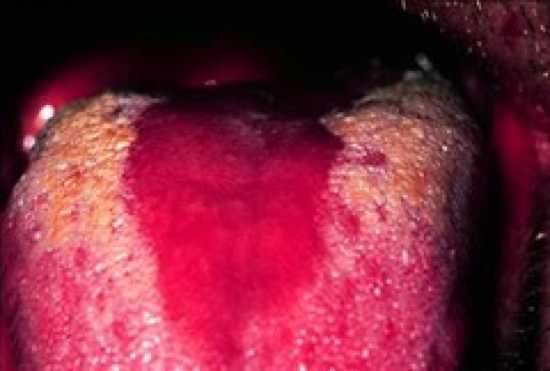
Ariboflavinosis is the medical condition caused by deficiency of riboflavin (vitamin B2). Ariboflavinosis is most often seen in association with protein-energy malnutrition, and also in cases of alcoholism. It was originally known as pellagra sin pellagra (pellagra without pellagra), as it exhibits certain similarities to the niacin deficiency pellagra.
The signs and symptoms of riboflavin deficiency typically include sore throat with redness and swelling of the mouth and throat mucosa, cheilosis and angular stomatitis (cracking of the lips and corners of the mouth), glossitis (magenta tongue with atrophy), seborrheic dermatitis or pseudo-syphilis (moist, scaly skin particularly affecting the scrotum or labia majora and the nasolabial folds), and a decreased red blood cell count with normal cell size and hemoglobin content (normochromic normocytic anemia).
Treatment involves a diet which includes an adequate amount of riboflavin. In cases related to weakened liver function, intravenous supplementation may be required.
Vitamin K deficiency:
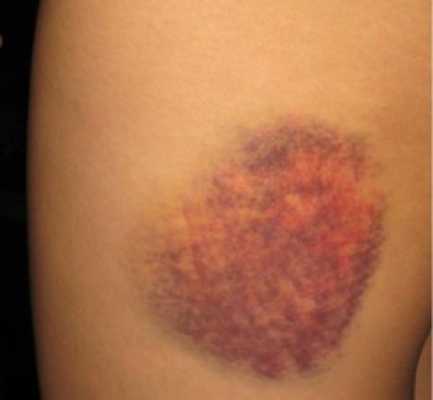
Vitamin K deficiency is a form of avitaminosis resulting from insufficient vitamin K1 or vitamin K2 or both. Vitamin K1-deficiency may occur by disturbed intestinal uptake (such as would occur in a bile duct obstruction), by therapeutic or accidental intake of vitamin K1-antagonists or, very rarely, by nutritional vitamin K1 deficiency.
As a result, Gla-residues are inadequately formed and the Gla-proteins are insufficiently active. Symptoms include ecchymosis, petechiae, hematomas, oozing of blood at surgical or puncture sites, stomach pains; risk of massive uncontrolled bleeding; cartilage calcification; and severe malformation of developing bone or deposition of insoluble calcium salts in the walls of arteries. In infants, it can cause some birth defects such as underdeveloped face, nose, bones, and fingers.
Hypocobalaminemia:

Vitamin B12 deficiency or hypocobalaminemia is a low blood level of vitamin B12. It can cause permanent damage to nervous tissue if left untreated long enough. Vitamin B12 itself was discovered through investigation of pernicious anemia, which is anautoimmune disease that destroys parietal cells in the stomach that secrete intrinsic factor.
Pernicious anemia, untreated, is usually fatal within three years. Once identified, however, it can be treated successfully and with relative ease (although it cannot be cured and continued treatment is required). Intrinsic factor is crucial for the normal absorption of B12 in amounts that occur in foods, and thus a lack of intrinsic factor, as seen in pernicious anemia, causes a vitamin B12 deficiency.
Pernicious anemia can cause permanent damage to nervous tissue if it has been symptomatic and has gone without treatment for sufficient time. Many other subtler kinds of vitamin B12 deficiency and their biochemical effects have since been elucidated.
The results of the Framingham Offspring Study indicate that B12 deficiency may be more common than was previously believed. Deficiency is most significantly linked to improper absorption rather than low consumption, as many who consume high amounts of B12 may still experience deficiency.
The total amount of vitamin B12 stored in the body is between 2–5 mg in adults. Around 50% of this is stored in the liver. Approximately 0.1% of this is lost per day by secretions into the gut, as not all these secretions are reabsorbed. Bile is the main form of B12 excretion; however, most of the B12 secreted in the bile is recycled via enterohepatic circulation.
Due to the extremely efficient enterohepatic circulation of B12, the liver can store several years’ worth of vitamin B12. How quickly B12 levels may change when dietary intake is low, depends on the balance between how much B12 is obtained from the diet, how much is secreted, and how much is absorbed. B12 deficiency may arise in a year if initial stores are low and genetic factors unfavourable, or may not appear for decades. In infants and children, B12 deficiency appears much more quickly when the diet becomes vitamin-poor.
Paresthesia:

Paresthesia is a sensation of tingling, burning, pricking, or numbness of a person’s skin with no apparent long-term physical effect. It is more generally known as the feeling of “pins and needles” or of a limb “falling asleep”. The manifestation of paresthesia may be transient or chronic. Paresthesias of the hands and feet are common, transient symptoms of the related conditions of hyperventilation syndrome, often open mouth, and panic attacks.
Other common examples occur when sustained pressure has been applied over a nerve, inhibiting/stimulating its function. Removing the pressure will typically result in gradual relief of these paresthesias.
Night Blindness:

“Night Blindness” is a condition making it difficult or impossible to see in relatively low light. It is a symptom of several eye diseases. Night blindness may exist from birth, or be caused by injury or malnutrition (for example, a lack of vitamin A). It can be described as insufficient adaptation to darkness.
The most common cause of nyctalopia is retinitis pigmentosa, a disorder in which the rod cells in the retina gradually lose their ability to respond to the light. Patients suffering from this genetic condition have progressive nyctalopia and eventually their daytime vision may also be affected.
In X-linked congenital stationary night blindness, from birth the rods either do not work at all, or work very little, but the condition doesn’t get worse. Another cause of night blindness is a deficiency of retinol, or vitamin A, found in fish oils, liver and dairy products. In the Second World War disinformation was used by the British to cover up the reason for their pilots’ successful nighttime missions.
Their success was, in the disinformation, attributed to improved night vision and pilots flying night missions were encouraged to eat plenty of carrots, which contain carotenoids and can be converted into retinol.The real reason for their success was their use of advanced radar technologies.







